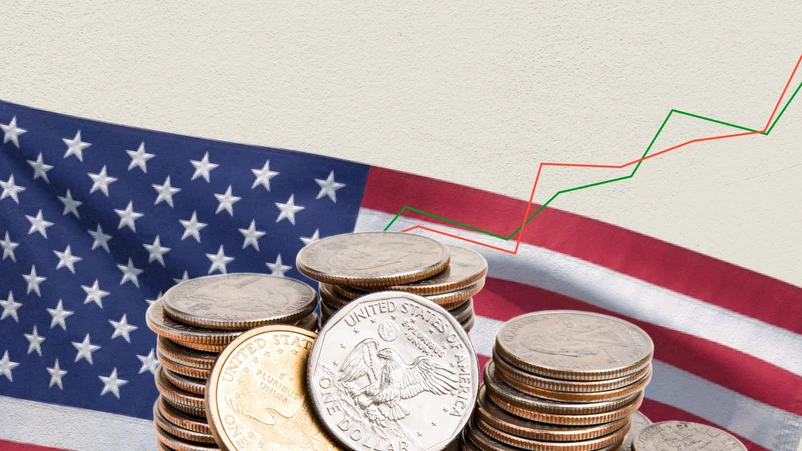Today's GDP and PCE numbers leave the US Fed caught between a rock and a hard place
A mixed bag of US data today, and especially so for the Fed as it contemplates if and when a first cut in interest rates might be warranted.

The undershoot in today’s Q1 growth figure – if confirmed in forthcoming revisions - provides a first real signal that US economic activity is finally starting to buckle and slow under the weight of the monetary tightening the Fed has delivered to date. Admittedly, two key contributors to today’s weaker number - inventories and trade - are volatile and will likely see a measure of unwinding in Q2, particularly the trade figures. But the weaker inventory number chimes with survey evidence provided by the likes of the NFIB, which has been reporting a decline in inventory stocks as firms look to cut stock levels in the face of high financing and borrowing costs. It is a real sign that the Fed's monetary tightening is finally acting as a drag on activity in the real economy.
Further depressing the numbers was government spending, which while still providing an overall boost to activity, has now seen its contribution to growth slow to just 0.21% of today’s total figure, the weakest contribution since Q2 2022. Overall, government consumption and investment rose by just 1.2% over Q1, a significant fall from the 4.6% figure posted in Q4. With pressure on both local and state government finances growing, this lower pace of growth looks far more likely to be the picture of things going forward and represents a significant down-step in what has been an important contributor to US growth in this cycle.
On the other side of the balance sheet, the biggest positive contribution to today’s report came from the personal consumption numbers, with consumer spending once again proving to be a big driver. However, the below consensus print – 2.5% against an expected reading of 3.0% - suggests that this source of growth is now starting to wane too. Indeed, today’s number shows personal consumption growth some 0.2% below the average growth rate seen over 2023. With post-tax personal incomes having grown by just 1.1% in Q1 - and likely to slow further as the demand for labour finally starts to roll over - and the stock of post-pandemic savings now largely exhausted, a bigger slowdown in consumption looks almost a certainty as spending finally moves in line with income growth.
Overall, today’s GDP report on its own is probably not a game changer for the Fed in terms of monetary policy. But the core PCE deflator number for Q1 released at the same time will not have been welcomed. Coming in at 3.7%, the reading was a sharp rise on the 2.0% print seen in Q4 and provides yet another signal that inflationary pressures in the US are becoming ‘sticky’ and that the disinflationary trend seen over much of H2 last year has possibly petered out. The 3.7% reading means that the deflator increased by 0.48% on a monthly basis in March, a figure that is clearly incompatible with a 2% CPI target and which by itself would rule out any cut in interest rates. And worryingly, much of the pick-up in today’s number stemmed from a 5.1% rise in service-sector inflation, a clear signal that the resilience being seen in the labour market – and by implication wages growth – is helping to fan inflationary pressures, a concern that the Fed has expressed several times during the current cycle.
On balance, and taking both the GDP and PCE reports together, we doubt the Fed will take any action. But the markets have clearly focused their attention on the PCE print rather than the GDP number, with stocks down and yields rising across the curve, and the Fed may be happy – for now – to let these higher yields do much of the heavy lifting in terms of providing a policy response to fight these signs of stirring inflationary pressures. But certainly, the timing and scale of interest rate cuts expected this year have been pushed further out and downwards, with only around 33bps of cuts now being priced in and a first cut not now fully discounted until December.
Tomorrow we get the monthly PCE deflator numbers, the Fed’s preferred measure of inflation, where the risk is now very real that a further set of strong numbers may see the market start to consider the real possibility that interest rates may actually be raised further before they can be cut.
Although still small, the risk that interest rates may actually need to be raised further before they can be cut is no longer seen as overly far-fetched.









